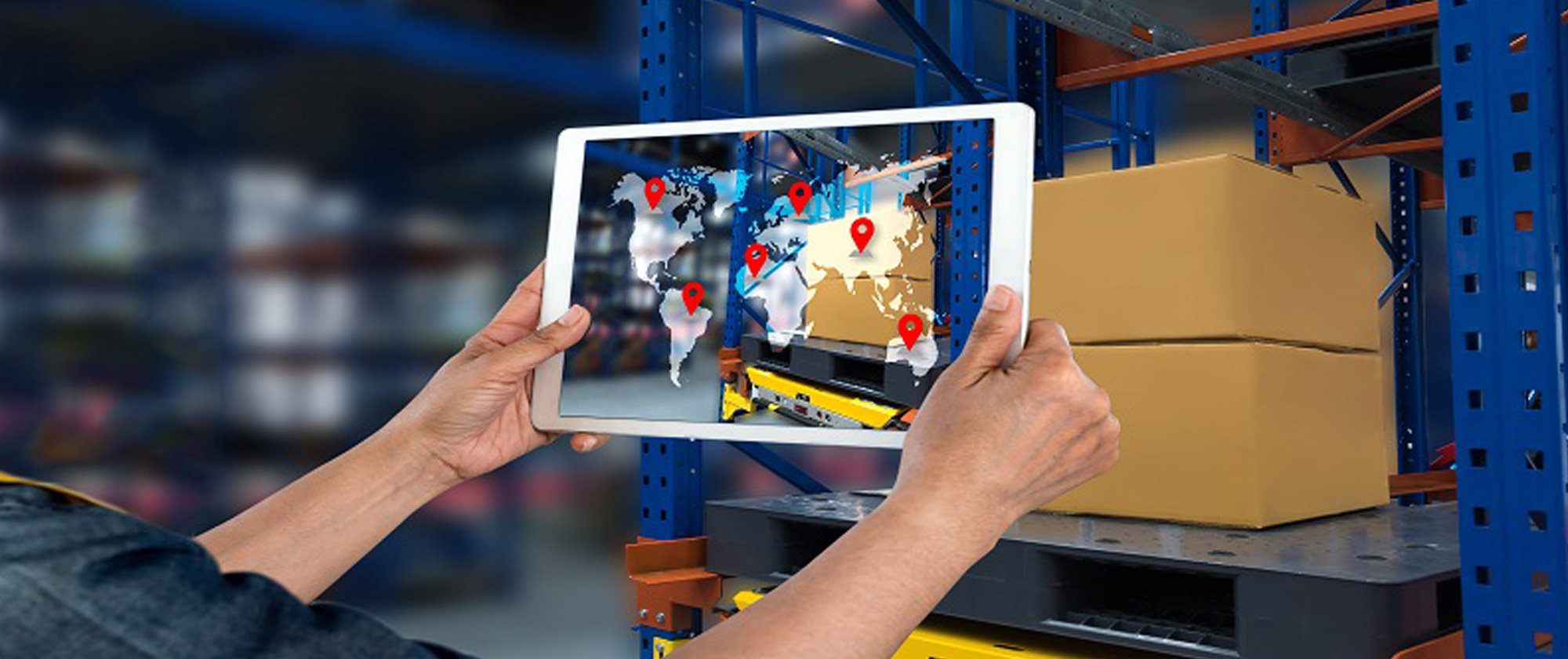Today, it is not enough for businesses to digitise themselves. They need to think like information businesses. Logistics firms, especially, need take advantage of the massive amounts of information they already possess by using the insights to make their businesses more efficient.
A beggar approached a king for alms. The generous king asked what he wanted. The humble beggar asked for a grain of rice on the first square of a chess board. He begged that the number of grain be doubled for every consecutive square. The king was amused at the modest demand. Everyone knows how the story ends with the king’s bankruptcy on this deal.
Logistics, has for long remained wedged in concepts that belonged to a different era, untouched by the spectacular advances in technology. Due to the nature of operations, operating models and technical debts, the industry has remained reliant on manual processes. As disruption envelops every sector, logistics finds itself right in the path of the winds of sustained change that continue to transform the sector with limitless possibilities. Metaphorically, the industry has entered the second half of the chess board of exponentially advancing technology possibilities. The finest example of this disruption is Amazon, the tech enabled supply chain and logistics behemoth that has effectively upended the business dynamics of the sector.
The sector as a whole is at an inflection point—the industry generates humongous amounts of data of various types, but curiously suffers from the data-rich-information-poor syndrome. The deluge of data continues to grow exponentially, and businesses are turning more digital by the day, yet are unable to acquire the critical thinking ability necessary for the competitive edge and efficiency in the digital era. The sector is presented with a fantastic opportunity to not just redeem itself but invent new business models by leveraging digital capabilities and analytics.
A granular look offers a clearer perspective of possibilities of digital transformation in this sector.
The Data Foundation – This is a common foundational layer—a sine-qua-non. This layer is rapidly becoming commodity and hardly presents high competitive differentiation. This is the starting point in the journey to digital capabilities and businesses cannot really expect to extract value here. At this level, certain practices become intrinsic to enterprises. For instance, data management is hygiene, an imperative, and businesses need to do it well enough to be able to even start at a capability level.
Logistics firms are awash with data. Every touchpoint of a payload in the supply chain generates copious amounts of data. With internet enabled devices, RFIDs, intelligent vehicles and geo-spatial tracking, the type of data, volume and velocity will continue to grow exponentially. The data rich operations present logistics companies with opportunities to not only manage the operations seamlessly, but propel it to a higher competitive level.
The Cloud – Organisations must leverage industrial cloud solutions. These services have evolved leaps and bounds and provide almost every toolset that data rich firms require in order to manage data. Advanced and fully managed services offer cost-effective and optimised operations that make better business sense than managing large in-house data centres with the necessary support staff. Large scale digital transformations, especially that rely on compute-intensive payloads stand to benefit from the infinite computing resources and elasticity of the cloud. It is wise to not fall into a trap of thinking of this as a luxury – this today is as much a luxury as 256 MB of storage was luxury two decades ago! Without the elasticity and scalability of the cloud, businesses will find themselves on a slippery slope when running large digital-centric applications. Moving up the capability ladder will become challenging, if not impossible. Here, logistics companies need to assume the profile of businesses that deal exclusively with information and plan data needs accordingly.
Digital Enablement Technologies – Mapping the extent of activities and processes involved in supply chains will invariably throw up startling perspectives. The representation, if attempted on paper, is likely to stretch across most areas of the planet, including oceans. However, if the same map was overlaid with a heat map depicting automated processes, the resultant representation is more likely to appear sparse- with negligible areas marking automated processes. The paucity of automation is startling as much as it presents an enormous opportunity for firms to leapfrog capabilities. Robotic Process Automation (RPA) technologies has been around for a while, and has transformed various sectors with high rate of value realisation. However, in logistics, implementation of automation has been piecemeal and fragmented, fixing parts of processes—not really transforming them. Very rarely has RPA been used as a truly transformative tool to allow large scale human labour redeployment to areas that demand a higher order of cognitive skills. In the case of logistic firms, this demand is huge, primarily consequent to the flux in the industry, but on the ground, operations find it difficult to move away from human-heavy processes.
Firms will do well to expand the remit of automation to Intelligent Automation. Breaking down the supply chains into components—warehousing, inventory, ordering, fulfilment, packaging, transportation, insurance, routing to last mile will allow firms to identify intelligent automation opportunities across silos and then create re-usable components that maximise value realisation across the transformation program. The all-important dimension is the ‘intelligent’ part of automation. Though RPA vendors extol the virtues of software solutions, most of them require additional cognitive embellishment when deployed in complex environments. Technologies such as webforms, web-scraping, chat bots, and vertically focused OCR solutions become mandatory to supplant basic RPA platform capabilities.
Most organisations fail to recognise a few critical consequences of digital transformation. One, digital transformation increased data footprint and volume. Businesses should not lose sight of the need for investing adequately in data management capabilities for handling the unintended consequences of data swell. Similarly, CIOs of logistics firms need to budget for creation of robotic operations command centres. This is a brand-new function that is rapidly gaining popularity—and is more like HR for Robots. For instance, a robot may have malfunctioned, and this may require an Ops Team for Robots set it right and back to work. Command Ops also handle situational decision making, for example Robot 79 is idle today, can it share the workload of Robot 123, originally tasked with month end data reconciliation? Other possibilities include a live tracker that monitors each robot and performance/output during a given time span. This will not only become a reality in the future, it will become the de facto nerve centre of logistics operations.
Customer Delight – Logistics firms have a unique advantage—working in tandem and embedded into supply chains of customers. Handled well, this is a competitive differentiator that can create competitive moats. Digitisation of key supply chain processes will automatically enable smoother interfacing with customer’s applications. Any firm that effectively improves bettering the performance of customers, reaps the rewards of greater affinity, resilience, and predictable revenue streams. This combined with cost-take-out benefits from the efforts of digitisation translates into margin expansion.
In the era of digital businesses eating traditional business models logistics firms need to think like information businesses. Tech giants like Google and Amazon collect super large volumes of data and use Artificial Intelligence (AI) on them to improve their core businesses. Google uses AI for better search, Amazon uses AI for better personalised product positioning. Logistics firms need to take a leaf out of this digital-only-thinking. Logistics companies possess datasets with information that are diverse enough to produce very unique and immediately actionable insights when placed in the hands of decision makers These insights can be monetised by offering critical information to clients who can use the supplied analytics to make their businesses more efficient. For instance, Company X could be using a reordering frequency to stock items in a given warehouse while there is a new supplier that is closer to the Company X’s production facility, used by other customers of the logistics firm. Just a mere switch could save millions from having to carry less production inventory. This insight is a veritable goldmine in the hands of Company X to improve its supply chain effectiveness. As data sources become more varied and open, in-house datasets are being supplanted with public data sources such as shipping, freight, temperature, ocean currents, precipitation and trade tariffs, etc., to create really unique insights.
New Business Model – Amazon Web Services (AWS) emerged from Amazon’s own need to store and manage the vast amount of data generated by its retailing business. To put this in numbers, AWS will be the fifth biggest software company in the world if Amazon chose to spin it out. The situation is the same for new businesses—grounded in data and information. Logistics firms, as mentioned earlier, are in a unique position. Digitisation of business has resulted in generation of huge volumes of data, in addition to the data that is exchanged/generated in the ecosystem of logistics. The ability to harness and monetise these datasets creates new business opportunities revolving around data.
In the digital era, where aggregators have changed the discourse, it is not uncommon for industry firms to come together to pool in resources and data to create consortium products that are commercially leveraged. Logistics firms can create open data infrastructure around well-defined APIs that provide large, diverse and rich datasets for use in the decision flow of their customers, analysts and other industry participants. The same proposition can then be extended into an app ecosystem that brings in crowdsourced application development. This could be the equivalent of an app store run by a consortium of logistics firms. The firms bring in their data sources, open their data infrastructure, and thousands of developers across the world, familiar with the supply chain industry, build applications by leveraging the analytical capabilities of cloud providers and the information shared by the firms. New business models are fundamentally disruptive and can pivot traditional logistics firms into a new sunrise sectors.
The business landscape of logistics companies is at the edge of a non-negotiable dimension—it’s either digitise or disappear. An outcome of digitisation is data, which in turn offers businesses unprecedented opportunities, but only when used right. The right use of solutions weaponises data to offer business outcomes that create sustained competitive differentiation. Logistics firms have their task cut out here—use data for all its worth, and move up the rungs, or remain forever on the first square of the chessboard.
Subrata Majumdar has 23 years of experience in Software Products, Business Management and Global Capability Center (GCC) Leadership. Subrata heads Clarivate Analytics’ India Tech footprint. He is passionate about digital transformation of businesses, data and analytics.














